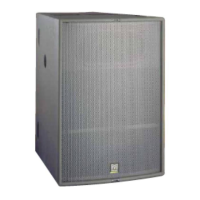Climatic effects on sound propagation
2a.1Introduction
When working in large venues or outdoors we should always remember that sound
propagates through air and is affected by air temperature, humidity and wind.
The most audible of these effects is wind as it can vary dramatically in less than a
second causing rapidly swept filter effects that change middle and high frequency
content into incoherent noise.
Air temperature can change suddenly with very audible effects (eg when backstage
doors are opened during sound checks, venue doors are opened near the end of a
show in winter or cold air displaces the warm air trapped in a stadium during a clear
summer evening). Although quite rare, rapid air temperature changes can cause
sudden changes in propagation direction and major coverage problems for a few
fretful minutes before clearing. These sudden coverage changes often trigger sound
system investigations as they tend to sound like mid or high frequency component
failures or tripped amplifiers.
Humidity tends to change slowly with time and affects the higher frequencies. This
slow change can be missed as our ear-brain system tends to compensate for subtle
high frequency losses. If the relative humidity changes from, say, 25% at the
beginning of a hot afternoon's sound check to 40% as the weather turns sultry, we
may not notice the gradual 6dB increase in high frequency at the back of the field
(3dB at the mix position) until the guest engineer arrives, having walked the field
with a clean* pair of ears, and wants to change everything.
*Be aware that the human ear discharges more wax in humid conditions and this will tend to negate the
improved high frequency propagation.
Although it is not possible to control the climate outdoors at the moment, a
knowledge of its various effects on sound system performance will allow good
system designers to minimise problems as follows:
1) Avoid trying to cover large outdoor areas with multiple, horizontally parallel
arrays. Keep mid & high frequency sections closely coupled at their optimum
horizontal splay angles to minimise audible combing effects with crosswinds.
2) Avoid high, heavily tilted point source clusters as their propagation can be
refracted by temperature gradients or reflected by strong air layers causing
major coverage problems. Use large, continuous vertical columns (from stage
height to crane hook) to propagate sound almost parallel to the ground.
3) Design for at least 5º excess vertical and horizontal coverage to allow for
propagation shifts. If you don't have the extra equipment for this contingency,
be prepared to retrim cluster tilts until the doors are about to open.
4) Where possible, take regular breaks outside the venue to avoid adapting to
humidity changes. If there is no time for breaks, ask trusted crew members for
All material © 2007. Martin Audio Ltd. Subject to change without notice.

